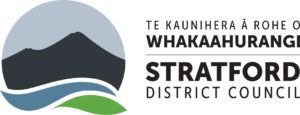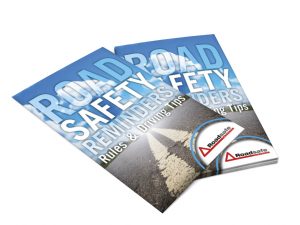Roadsafe Taranaki collaborates with key road safety stakeholders to try and reduce death or injury on Taranaki roads.

About Us


Who we are
Roadsafe Taranaki is a partnership managed by the South Taranaki District Council on behalf of the Stratford and South Taranaki district councils to promote road safety throughout the South and Central Taranaki. Prior to 30 June 2025 the Roadsafe Taranaki programme was the longest running “shared service” between the three Taranaki District Councils.
Why we’re here
Road trauma in Taranaki is a significant issue for a small region within New Zealand. Every death or injury on the road has devastating impacts on families and the small communities we live in, and is why we support the Road to Zero vision of the New Zealand Government.
Roadsafe Taranaki has a focus on road safety promotion and education to help change behaviour and attitudes through a range of activities and events. The key objective is to reduce deaths and serious injuries and to improve the safety of all road users who travel on Taranaki roads. Education is just one tool in this objective and partnerships are crucial to achieving success in any road safety programme.


What we do
Roadsafe Taranaki is funded to deliver activities that target high and medium road safety risks in Taranaki. These risks have been identified through local crash data, community feedback and through NZTA via their current Land Transport Programme (LTP).
Some of the activities either funded, delivered or support by Roadsafe Taranaki include:
- Recidivist drink driving program
- Restraint education
- Impaired driving (alcohol and drug)
- Advanced driver training (theory and targeted practical sessions for inexperienced drivers)
- Targeted road safety events for particular audiences, e.g. older drivers, high risk drivers
- Supporting Students Against Dangerous Driving (SADD) in secondary schools
- Partnering with scgools to deliver campaigns targeting chaos & safety, bus safety and delivering cycle skill programmes.
- Working with community organisations that deliver driver licencing courses
- Coordinating and managing the Taranaki Workplace Road Safety Charter, including workshops, presentations and newsletter.
Partnerships
A number of agencies and organisations work with Roadsafe Taranaki to deliver collaborative road safety projects that follow best practise and achieve the desired outcomes of education and improving driver attitude and behaviour.
Some of the collaborative projects include:
- Motorcycle training
- Ready2Drive expos for young drivers
- Cycle skills training
- Fatigue stops
- Intersection campaigns
- Recidivist drink driving.
Local businesses and organisations support the delivery of road safety programmes through the supply of funding, resources or personnel and Roadsafe Taranaki acknowledges this support and looks forward to continuing these partnerships.
Background
Roadsafe Taranaki delivers a regional road safety programme which is jointly funded with the New Zealand Transport Agency (NZTA) contributing 65% while the South Taranaki District Council and Stratford District Council split the remaining 35% (South Taranaki 65% and Stratford 35%).
Roadsafe Taranaki employs one full-time and one part-time road safety staff with the Community Development Manager at STDC over-seeing the programme delivery.
We are very grateful for the support we receive and welcome idea’s, contributions and partnerships that embrace the key road safety messages and enhance our programme.
History
Roadsafe Taranaki was formed in 2004 after the Land Transport Safety Authority (LTSA) changed how the Community Road Safety Programme (CRSP) was delivered in the regions. The CRSP had been delivered by the Taranaki Regional Council until 2002 when LTSA reviewed its national guidelines and funding processes and shifted the CRSP from being project focussed to a community development focus. The LTSA wanted to see Road Safety Coordinators working with communities to develop their own solutions and projects to address local road safety issues. It also initiated a drive to house Road Safety Coordinators within territorial local authorities rather than regional ones.
In response to these changes, the three district councils within the Taranaki region (New Plymouth, Stratford and South Taranaki) agreed to establish a joint Management group for the purpose of employing or contracting personnel to deliver the CRSP. A memorandum of understanding (MOU) was signed between the three councils with the administration of Roadsafe Taranaki sitting within the South Taranaki District Council (STDC). In March 2025 the New Plymouth District Council withdrew their support of year 2 & 3 of the 2024-2027 Roadsafe Taranki program. South Taranaki District Council and Stratford District Council agreed to increase their local contribution to ensure the program could continue without compromising the delivery.
Road to Zero Road Safety Strategy
The strategy focuses on four pillars that target the highest contributing factors to fatal/road crashes.
- Safer roads
- Safer drivers
- Safer vehicles
- Resetting our approach to speed limits

